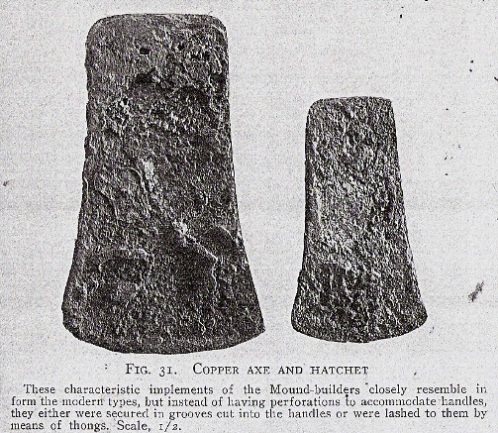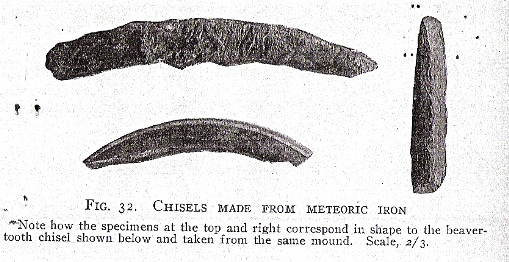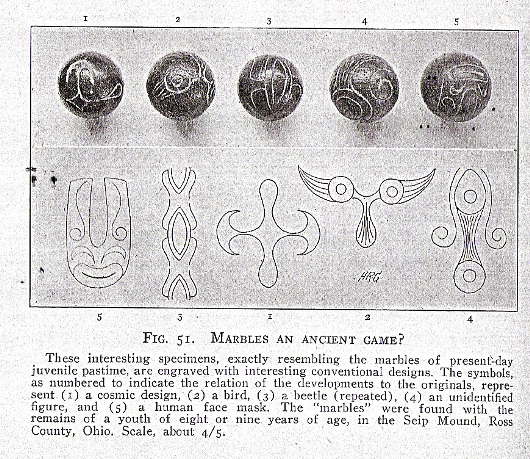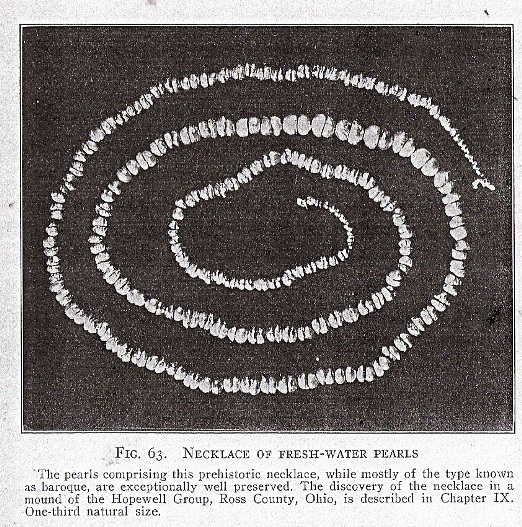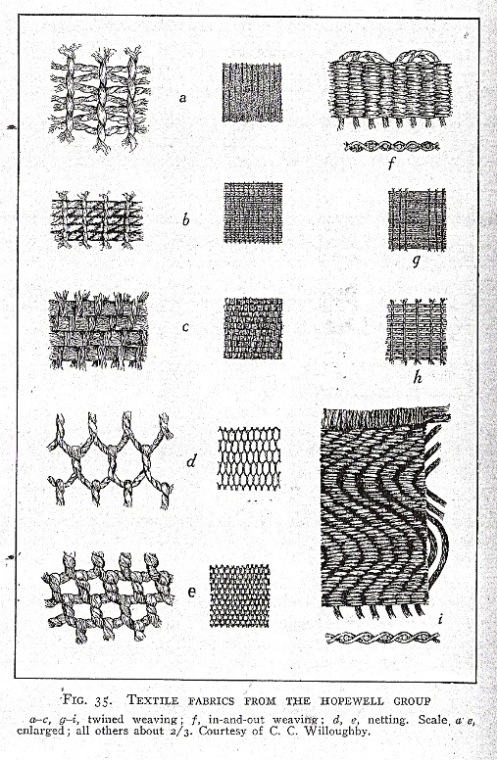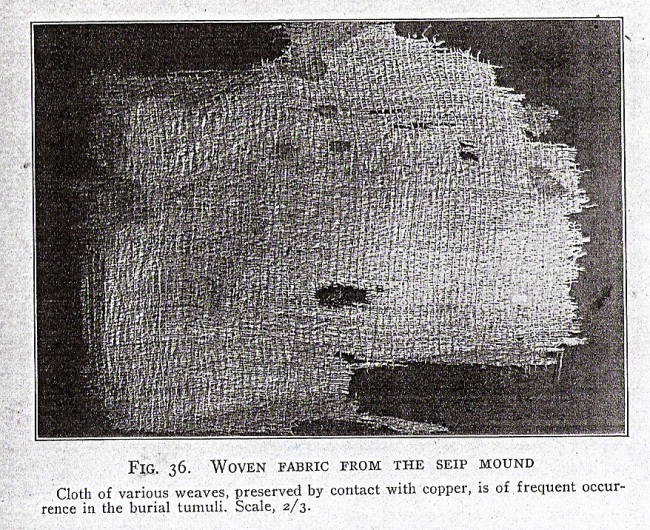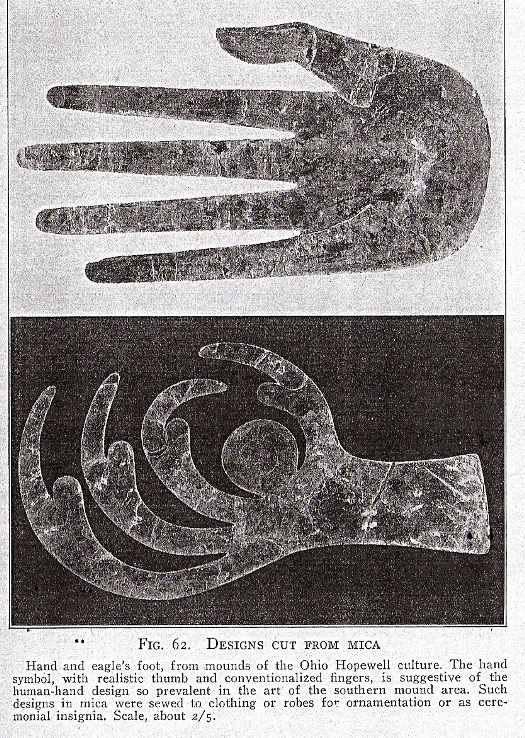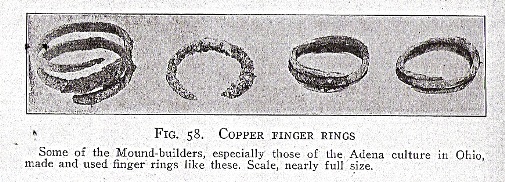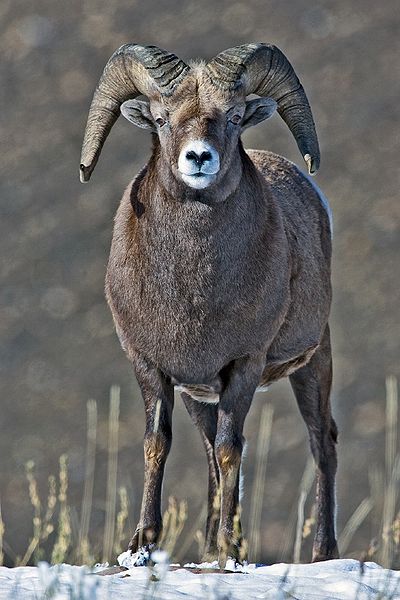
|
&
|
|
|
|
Contrary to popular presumption, the New England area is in fact subject to earthquakes and events of profound daytime darkness. The sky darkening, atmospheric effects of the "great and terrible day" of the Book of Mormon (3 Nephi 8:23-25) are comparable to “New England's Dark Day”. No volcano needed! See EARTHQUAKES AND DARK DAYS IN CANADA, AND THE NORTHEASTERN UNITED STATES. It is no surprise that Leopards, monkeys, palm trees, hewn stone
buildings, and volcanoes, are all mentioned in
John Lloyd Stephens' Incidents of Travel in Central America (1841).
References to many of these can also be found
in Old World scripture. For instance, monkeys ("qophim", translated "apes",
KJV) were among the imported animals King Solomon acquired.
(1 Kings 10:22) Some animals are inaccurately identified in the King James Bible (e.g. "satyrs", possibly shaggy goats, or he-goats, Isaiah 13:21, 2 Nephi 23:21; compare LXX Esaias XIII.21-22), but "horses" are not misidentified in the renowned translation. Horses also feature in 19th Century "Mound-builder" literature. Those positing Central or South American settings for the Book of Mormon often insist that animals named in the Book of Mormon (including the horse) are other species. There is reason to be suspicious of this overused argument, especially when the KJV correctly identifies these animals. See "Horse" in the listing below. On the subject of sidestepping the obvious when it comes to things mentioned in the Book of Mormon, American author, historian and journalist Hampton Sides cites a respected anthropologist: "Yale's Michael Coe likes to talk about what he calls “the fallacy of misplaced concreteness,” the tendency among Mormon theorists like [John L.] Sorenson to keep the discussion trained on all sorts of extraneous subtopics… while avoiding what is most obvious: that Joseph Smith probably meant “horse” when he wrote down the word “horse” …" (Hampton Sides, “This Is Not the Place”, Double Take Magazine, Vol. 5, No 2, Spring 1999; Also included in his work American: Dispatches from the New Frontier, 2004)
The dignified language of the King James Bible is familiar to
many, but some KJV terminology appearing in the Book of Mormon is
imperfect. The biblical terminology, however, can actually serve as a
scholarly key. The Gentile translation is readily traced back to
more perfect Old World terminology: Thus the familiar but unoriginal
"Red Sea" is understood to actually be "reed sea", "steel"
is
actually a form of hardened copper, "brass" may describe a
copper alloy like bronze, and "silk" can mean a fine
fabric made from plant fiber, etc. |
|
|
|
The
Extent of Lehi’s American Inheritance
Lehi’s ancient covenant
land of liberty – the American “land of promise”, could not have occupied all
the
(1)
Not every
land in the
(2)
Not every
land in the
Unlike the temperate seasons of the After the Law of Moses was fulfilled, it is possible that the blessings of the “land of promise” could have been extended, by way of the New Covenant, to other lands; previously excluded by the strict requirements of the Law. (3 Nephi 15:2; 20:14)
According to
the Book of Mormon, the city of A small coast in a Bigger Inheritance Attentive reading of the text reveals that the principal American lands of the Book of Mormon were close together. At a minimum, the distance between the outskirts of the city of Nephi in the land of Nephi, and the city of Zarahemla in the land of Zarahemla (north of Nephi) was only about 12-8=4 day’s on foot. (Mosiah 24:25; 23:3) The distance between the city of Mulek in the land of Nephi (Alma 53:6), and the city of Bountiful in the land of Bountiful (north of Zarahemla), was only a night’s (or a day’s) march. (Alma 52:18-22, 26-28) The Book of Mormon land of Cumorah was so near the land of Zarahemla, that travelers from the elevated land of Nephi could mistake a location near Cumorah (Finger Lakes region, LDS D&C 128:20) for Zarahemla. (Mosiah 8:7-8; 21:25-26) The line Bountiful and the land Desolation was only a day and a half’s journey from the east to the “west sea” (Lake Erie). (Alma 22:32) A fortified line between Bountiful and Zarahemla could be crossed in one day. (Helaman 4:5-7) According to Alma 56:36-38, a day’s march northward in the wilderness was considered a “considerable distance”. An “exceedingly great distance” northward (Helaman 3:3-4) could therefore mean a few hundred miles northward to the many lakes and rivers of Ontario, Canada. The “south countries” mentioned in Mormon 6:15 may be the same “south countries” (south of Lake Erie) noted in the Doctrine and Covenants. (D&C 75:8) Its true that Lehi’s covenant inheritance could have extended southward beyond the principal lands named in the Book of Mormon. Lehi’s inheritance could include the vast heartland of America; but the fact remains, the principal lands of the Book of Mormon were small and localized near the “west sea” (Lake Erie). In the vicinity of Great Lake Erie there resides a narrow pass and a narrow neck of land divided by the sea. The land (western NY) exhibits a general southern rise in elevation, and there is a northward flowing river (from southern headwaters) exactly as the Book of Mormon describes. Its true that the American land of “first inheritance” bordered by the west sea, but the Book of Mormon does not say that Lehi’s family arrived there by crossing the west sea. (Alma 22:28) Instead, Nephi, at the beginning of his record, tells us that they crossed “the large waters into the promised land”. There is more than one waterway that leads from the Atlantic Ocean to lands near Lake Erie. There is no indication that the “west sea” was salt water. On the contrary, it appears that Book of Mormon people “spread ... from the sea west to the sea east” after a terrible draught. In other words, they may have congregated near the west sea during the draught because it was freshwater. (Helaman 11:17-20) Native peoples “residing in the west” near Lake Erie were identified early on as “Lamanites”, descendents of Book of Mormon peoples. (History of the Church, Vol. 1, pp. 118-120)
John Cabot’s Discovery of
North America
There is no
firsthand, verifiable statement by Joseph Smith espousing a hemispheric geography
for the Book of Mormon. Though others thought of North and South America as one
continent, Joseph’s use of the expression “this continent” possibly refers to
It has not
been shown that Joseph’s expression; “this country” included
“…a new flood of light has poured upon the world, and the field of American
antiquities has been opened.”
“…In our own country, the opening of forests and the discovery of tumuli or
mounds and fortifications, extending in ranges from the lakes through the
valleys of the Ohio and Mississippi, mummies in a cave in Kentucky,
the inscription on the rock at Dighton…the ruins of walls and a great city in
Arkansas and Wisconsin Territory, had suggested…the strong belief that powerful
and populous nations had occupied it and had passed away, whose histories are
entirely unknown. The same evidences continue in
19th Century Adventurer, John Lloyd Stephens
Not long
after reading both volumes of Stephens’ bestseller, Joseph Smith signed several
Times and Seasons articles
that follow the outline of discoveries listed by Stephens, i.e. discoveries in
his “own country”. It is worth noting that Joseph’s signed articles resource
Josiah Priest’s American Antiquities, and unmistakably correlate the Book
of Mormon with the
“Mound-Builders” of Joseph Smith’s native setting for the Book of Mormon poses a stumbling block to those seeking to promote more exotic geographies. Consequently, some LDS try to show that Joseph speculated like other men (inaccurately) on the subject of Book of Mormon geography. This line of attack is deemed important in order to contend that Joseph did not know any more than others, about the sacred lands of the Book of Mormon. But this argument is not very compelling. LDS scripture has examples of prophets giving inspired discourses, notwithstanding the prophet’s incomplete understanding of the subject matter. (Alma 37:11; 40:20) That a prophet’s knowledge of a thing may be incomplete and subject to supposition does not prove that the prophet has no revelation on the subject. The Apostle Paul said: “For we know in part, and we prophesy in part. But when that which is perfect is come, then that which is in part shall be done away.” (1 Corinthians 13:9-10)
If we say
that Joseph speculated, and thus had an imperfect understanding of
Having
revealed Cumorah’s location, Joseph allowed others to form divergent opinions on the
location of other Book of Mormon lands. Not all of the early Saints accepted a hemispheric setting. Some placed
southern most Nephite territory in the
Of the many competing
Book of Mormon geographies
proffered by early Church leaders, not one is known to have denied the location
of Cumorah revealed in LDS scripture. They all recognized certain
North American Indian tribes to whom missionaries were sent, as descendents of Book of Mormon peoples; and they all
knew that Cumorah resides near the Finger Lakes of western
Art of Frederick
Catherwood. Central American ruins discovered by Stephens and Catherwood dating
more recent than Book of Mormon times.
The earliest
known denial of the revealed location of Cumorah came from Twentieth
Century RLDS
(Reorganized Latter-day Saints Congregation) who dismissed the LDS practice
of baptism for the dead. (See for instance
“How Exaggerated Settings for the Book of Mormon Came to Pass”)
Baptism for the dead is the subject of the epistle (LDS scripture) which places Cumorah.
Joseph Smith clearly placed Book of Mormon peoples and
activities in land occupied by the As far as can be ascertained from his signed articles, Joseph Smith held a view similar to that of Alexander Von Humboldt, Josiah Priest, A. Lapham and others; who theorized that the Mound-Builders eventually migrated into Mexico from the region of the Great Lakes. (Priest, American Antiquities, pp. 195-198, 1835 Edition) No word-print analysis can tell us the extent to which Joseph approved collaborative articles which he did not sign. The extent to which he speculated on Central America, is not certain; and does not logically thwart the things he knew and revealed relative to the Book of Mormon’s original setting. There is no mention of John Lloyd Stephens in Joseph Smith’s journal. What you will find recorded there is the Prophet’s epistle to the Church identifying Cumorah in the Finger Lakes region, south of Lake Ontario. (The Papers of Joseph Smith, Vol. 2, Journal, 1832-1842, pp. 468 – 475) Such facts support a setting among the mysterious Mound-Builders of North America. Mound-Builder America fits the Book of Mormon literary setting best. This is the Book of Mormon setting identified by mainstream American History and Literature specialists. (Roger G. Kennedy, Hidden Cities – The Discovery and Loss of Ancient North American Civilization) Unsigned Times and Season newspaper articles, published more than a decade after the Book of Mormon, should be recognized as later developments - caught up in the sensation of Stephens’ discoveries. To strain and drum incessantly on these unendorsed articles, and on far-flung geographies promoted by other brethren, is to strain at gnats and swallow llamas. The importance of comparing the Book of Mormon directly to works treating the Mound-Builders, on the other hand, looms large in tusk and trunk! The following is a quote from an important work classed in the Mound-Builder genre, predating the publication of the Book of Mormon: “It is highly probable that the more civilized part of the tribes of Israel, after they settled in America, became wholly separated from the hunting and savage tribes of their brethren … that the more civilized part continued for many centuries; that tremendous wars were frequent between them and their savage brethren, till the former became extinct.
This hypothesis accounts for the ancient works, forts, mounds, and vast
enclosures, as well as tokens of a good degree of civil improvement, which are
manifestly very ancient …”
(Ethan Smith,
A View of the
Hebrews or the Tribes of Israel in America,
Second Edition (1825)
, pp. 172-173)
|
|
|
Book of Mormon terms (elements) relating to living things |
Cited in the King James Version of the Bible |
Cited in the Book of Mormon's |
The Mound-Builder Genre: elements found in
Joseph Smith's country (JSC) and in literary sources treating the mound
builders |
|
1 |
Animal |
|
B of M; though numerous creatures are mentioned in the KJV, the word
animal does not appear there. |
JSC; B Notes 156 |
|
2 |
Asp |
KJV |
|
See Serpent |
|
3 |
Ass |
KJV |
B of M |
JSC |
|
4 |
Barley |
KJV |
B of M; barley is required for keeping the |
JSC; a variety of barley was cultivated anciently near the |
|
5 |
Bear |
KJV |
|
JSC; B Notes 186; mound builder necklaces of grizzly-bear canines. (Mound
Builders & Cliff Dwellers, Lost Civilizations series, editor Dale M.
Brown, pg. 26) |
|
6 |
Beast |
KJV |
B of M |
JSC; B 41 |
|
7 |
Bee
|
KJV OT |
|
JSC |
|
8 |
Blossom |
KJV OT |
B of M |
JSC |
|
9 |
Branch |
KJV |
B of M |
JSC; B 93 |
|
10 |
Bread |
KJV |
B of M |
JSC |
|
11 |
Bull,
Calf (Bovine) |
KJV |
Cited in O. W. scripture and implied in N. W. Setting |
JSC; George Washington referred to bison using the terms "bull" and
"calf". (Roger G. Kennedy, Hidden Cities - The Discovery and Loss of
Ancient North American Civilization, pg. 87); See Cow |
|
12 |
Cattle |
KJV |
B of M; the Hebrew word "miqneh", translated "cattle" in the KJV, comes
from the verb to "get" or "acquire" and implies purchasable animals.
"Cattle" include more than bovine animals. |
JSC |
|
13 |
Cedar |
KJV OT |
|
JSC; B 19 |
|
14 |
Chicken (Brood) |
KJV NT |
B of M; NT Greek term for "chickens" means "brood". |
JSC |
|
15 |
Cockatrice |
KJV OT |
|
See Serpent |
|
16 |
Corn (Cereal Grain) |
KJV |
B of M; "corn" in the KJV is a cereal grain. |
JSC; B Notes 170 |
|
17 |
Cow |
KJV OT |
B of M |
JSC; B 41-42, bison; North American explorer Samuel de Champlain
(1562-1635) describes "a herd of wild cows". (McGavin and Bean, Book
of Mormon Geography, pg. 8) |
|
18 |
Creature |
KJV |
B of M |
JSC |
|
19 |
Cummom |
|
B of M |
Unknown animal |
|
20 |
Curelom |
|
B of M |
Unknown animal |
|
21 |
|
|
The honey bee is not identified in the N.W. setting. |
JSC; see Bee |
|
22 |
Dog |
KJV |
B of M |
JSC; B 109, 111 |
|
23 |
Dove |
KJV |
B of M |
JSC |
|
24 |
Dragon |
KJV |
B of M |
JSC; B Notes 190, fossil remains of prehistoric reptiles. Also a canid, i.e. jackal, wolf, wild dog. |
|
25 |
Elephant (Mastodon, Mammoth) |
|
B of M |
JSC; B Notes 135-138, ancient elephant remains found in mound builder territories. See William McAdams, Records of Ancient Races,1887, pp. 114-116 and Stephan Dennison Peet, The Mound Builders, Their Works and Relics, pp. 38–44; see also Mercer, H.C, The Lenape Stone - The Indian and the Mammoth, 1885 |
|
26 |
Fatling |
KJV |
B of M |
JSC |
|
27 |
Fig |
KJV |
B of M |
JSC; Figs imported to VA as early as 1669 and successfully grown in NY. |
|
28 |
Fir-tree |
KJV OT |
|
JSC |
|
29 |
Fish |
KJV |
B of M |
JSC; B Notes 181; AA 185 |
|
30 |
Fly |
KJV OT |
|
JSC |
|
31 |
Fruit |
KJV |
B of M |
JSC; B Notes 190; AA 190 |
|
32 |
Flock |
KJV |
B of M |
JSC |
|
33 |
Fold |
KJV |
B of M |
JSC |
|
34 |
|
KJV OT |
B of M; jungle is nowhere mentioned in the B of M. |
JSC; B 19 |
|
35 |
Fowl |
KJV |
B of M |
JSC |
|
36 |
Game (Wild Beasts) |
|
B of M |
JSC; AA 185 |
|
37 |
Goat |
KJV |
B of M; Goats are among the clean animals approved for sacrifice under
the Law of Moses. |
JSC; indigenous North American sheep and goat-like animals (mountain
goats). |
|
38 |
Grain |
KJV |
B of M |
JSC |
|
39 |
Grape |
KJV |
B of M; wine is required in Israelite ordinances. |
JSC; AA 190, North American grapes discovered by the Norse. (Hauksbok,
"Saga of Eric the Red") Grapes grew in the NY region anciently. (William
A. Ritchie, The Archaeology of New York State, Preface pg. xxiv)
|
|
40 |
Grass |
KJV |
B of M |
JSC; B 63, 70 |
|
41 |
Hen |
KJV NT |
B of M |
JSC |
|
42 |
Herd |
KJV |
B of M |
JSC; B 50 |
|
43 |
Honey |
KJV |
B of M; scriptural mention includes "honey" (syrup) made from fruits. |
JSC
|
|
44 |
Horse |
KJV |
B of M; the animal translated "horse" in the KJV is not ambiguous. |
JSC; "steed": B 99-100, 102; B Notes 191; AA 256, artifact interpreted as evidence that mound builders rode horses, and had horse drawn wagons (or other domesticated animals pulling wheeled carriages). Curiously, scripture doesn't say that B of M peoples rode their horses. The notion that B of M peoples rode horses is depicted in Arnold Friberg's art, but is not found in the scripture. The scripture mentions "horses" in connection with "chariots". (Alma 18:9-12) See "Ojibway spirit horses ...", "About the Breed", "The Relationship Between the Indigenous Peoples of the Americas and the Horse: Deconstructing a Eurocentric Myth". See Chariot |
|
45 |
Insect |
|
B of M |
JSC |
|
46 |
Kid (Goat) |
KJV |
|
JSC; see Goat |
|
47 |
Lamb (Sheep) |
KJV |
B of M |
JSC; see Sheep |
|
48 |
Leopard
|
KJV |
Unlike "lions", there is no explicit mention of spotted cats in the B of M N. W. setting. Its worth noting, however, that cougar cubs, and bobcats are spotted. The name "Nimrah" (son of Akish, Ether 9:8) is a feminine place name in the Bible. (Numbers 32:3) "Nimrah" or rather "Beyt-Nimrah" can be interpreted to mean "place (house) of the leopard", but may also describe a spotted or striped appearance on the ground, or gleaming, glossy clear water. Was the son of Akish named after a place ... the Finger Lakes? See "Nimrim" (Isaiah 15:6). |
|
|
49 |
Lily |
KJV |
B of M |
JSC |
|
50 |
Linen |
KJV |
B of M; linen is a cloth made from plant fiber. |
JSC; ancient peoples of NY wove textiles. (William A. Ritchie, The
Archaeology of New York State, pp. 259, 261) |
|
51 |
Lion |
KJV |
B of M |
JSC; B 20, 116; B Notes 186, panther (mountain lion); see mound builder
cougar-effigy pipe. (Mallory McCane O' Connor, Lost Cities of the
Ancient South East, plate 1) |
|
52 |
Meat |
KJV |
B of M |
JSC |
|
53 |
Milk |
KJV |
B of M |
JSC |
|
54 |
Monster |
|
No specific land animal is referred to as a monster in the B of M. Used figuratively in Alma 19:26. |
B 68; B Notes 176, 188, "monster of the ocean". |
|
55 |
Moth |
KJV |
B of M |
JSC |
|
56 |
Neas |
|
B of M |
Unknown variety of grain |
|
57 |
Oak |
KJV OT |
|
B Notes 191 |
|
58 |
Oil (Anoint with Oil) |
KJV |
B of M |
JSC; VOTH 113, 163 |
|
59 |
Olive-Tree |
KJV |
|
JSC |
|
60 |
Owl |
KJV OT |
|
B 39, 111; AA, 178, VOTH 177; see mound builder owl-effigy. (Mallory
McCane O' Connor, Lost Cities of the Ancient South East, pg. 130)
|
|
61 |
Ox |
KJV |
B of M |
JSC; B 106 |
|
62 |
|
KJV |
B of M |
JSC; Mound-Builder freshwater pearl necklaces, and pearls sewn on
clothing. (Mound Builders & Cliff Dwellers, Lost Civilizations
series, editor Dale M. Brown, pg. 26) |
|
63 |
Plant |
KJV |
B of M |
JSC |
|
64 |
Root |
KJV |
B of M |
JSC |
|
64 |
Sat |
KJV OT |
See Goat | |
|
65 |
Serpent |
KJV |
B of M |
JSC; B Notes 158 |
|
66 |
Sheaves |
KJV OT |
B of M |
JSC |
|
67 |
Sheep |
KJV |
B of M; sheep, goats and other specific clean animals approved for
sacrifice. |
JSC; North American bighorn sheep qualify. |
|
68 |
Sheum |
|
B of M; Non-biblical Old World grain |
Possibly a kind of barley or even pine nuts.(Robert R. Bennett, "Barley
and Wheat in the Book of Mormon", 2000)
|
|
69 |
Silk |
KJV |
B of M; "shesh" is biblical "silk" made from plant fiber.
(Proverbs 31:22,
KJV) |
JSC; mound builders wove textiles made from plant fiber and rabbit hair.
(Lynda Norene Shaffer, Native Americans Before 1492 - The
Moundbuilding Centers of the Eastern Woodlands, plate 32) |
|
70 |
Skin (Protective Covering) |
KJV |
B of M |
JSC; B 42; AA 167 |
|
71 |
Sow |
KJV NT |
B of M (3 Nephi 7:8)
NT Greek term for "sow", "hus" can mean "boar". |
JSC; B Notes 170 |
|
72 |
Straw |
KJV |
|
JSC |
|
73 |
Stem |
KJV OT |
B of M |
JSC |
|
74 |
Swine |
KJV |
B of M |
JSC; B Notes 170, "peccary" remains found in |
|
75 |
Teil-tree |
KJV OT |
|
|
|
76 |
Thistle (Bramble) |
KJV |
B of M |
JSC; B 63; AA 190 |
|
77 |
Thorn |
KJV |
B of M |
JSC; B 63 |
|
78 |
Thrash |
|
B of M mentions "hoe and to thrash" Ether 10:25 |
|
|
79 |
Timber |
KJV OT |
B of M |
JSC; B Notes 154 |
|
80 |
Tree |
KJV |
B of M |
JSC |
|
81 |
Vine |
KJV |
B of M |
JSC |
|
82 |
Vineyard |
KJV |
B of M |
JSC |
|
83 |
Vulture |
KJV OT |
B of M |
JSC; B 39; AA 190 |
|
84 |
Whale |
KJV |
|
JSC |
|
85 |
Wheat |
KJV |
B of M; wheat is required in Israelite rites. |
JSC; North American self sown wheat discovered by the Norse. (Hauksbok,
"Saga of Eric the Red") |
|
86 |
Wine |
KJV |
B of M |
JSC; see Grape |
|
87 |
Wolf |
KJV |
B of M |
JSC; B 20, 50, 101; B Notes 185 |
|
88 |
Wood (Building Material) |
KJV |
B of M |
JSC; B 34, 41, 56; AA 167 |
|
89 |
Worm |
KJV |
B of M |
JSC
|
|
|
|
|
|
|
|
|
|
|
|
|
|
|
|
|
Book of Mormon terms (elements) relating to various things |
Cited in the King James Version of the Bible |
Cited in the Book of Mormon's |
The "Mound-Builder" Genre: Elements found in
Joseph Smith's country (JSC) and in literary sources treating the mound
builders |
|
90 |
Altar |
KJV |
B of M |
JSC; AA 167; VOTH 79, 120, 165, Numerous stone |
|
91 |
Anchor |
KJV NT |
B of M |
JSC |
|
92 |
Armor |
KJV |
B of M |
JSC; B 41; B Notes 147 |
|
93 |
Arrow |
KJV OT |
B of M |
JSC; B 33, 56; B Notes 147, AA 93, 167. The Davistown Museum: 092103NA33 Projectile points (3) Copper, A: 7 cm x 3.1 cm, B: 8.6 cm x 2 cm, C: 6.1 cm x 3 cm, age unknown. These items were dug from a mound builder's site in Ohio. DTM MHC-B . |
|
94 |
Art |
|
B of M |
JSC; B Notes 149; AA 90-92; remarkable mound builder sculpture and
artistry. (Lynda Norene Shaffer, Native Americans Before 1492 - The
Moundbuilding Centers of the Eastern Woodlands, plates 11, 12, 19,
21, 22, 23, 33) |
|
95 |
Ax (Axe, Hatchet) |
KJV |
B of M |
JSC; B 33, AA 90, 93, 167; mound builder axes. (Mound Builders &
Cliff Dwellers, Lost Civilizations series, editor Dale M. Brown, pg.
26) |
|
96 |
Ball (...of fine brass) |
KJV OT |
B of M; perhaps analogues to the "brass" firmament, the perceived solid
dome or "compass" of heaven.
(Deuteronomy 28:23,
Proverbs 8:27,
Job 22:14)
The perceived movements of the heavenly quarters define Hebrew directions.
See Compass |
JSC; AA 101, "gold" covered metal balls recovered from a mound.
A stone “octagonal ball” found at the |
| 96a | Band (Restraint) | KJV | B of M | JSC |
|
97 |
Bank of Earth |
|
B of M |
JSC; B Notes 147, 168, 171; AA 159;
Earthworks very similar to those describe in the Book of Mormon
(Alma 48:8-9;
50:1-4;
53:4) are described by author James Adair (1775) in
A History of the American Indians, pp. 377-378 |
|
98 |
Baptism (Washings) |
KJV NT |
B of M |
JSC; B17, VOTH 79, 165 |
|
99 |
Beach |
|
B of M |
JSC; beach is defined as a sandy or pebbly shore of a body of water (not
necessarily an Ocean coast). The term also applies "to the shore of a
lake or large river." (Beach, Oxford English Dictionary) see
Seashore |
|
100 |
Bone…Heaps |
|
B of M |
JSC; B Notes 145-150; AA 55, 179, 185 |
|
101 |
Bow
|
KJV |
B of M |
JSC; B 34; AA 167 |
|
102 |
Bow of Steel |
KJV OT |
David's "bow of steel"
(Psalm 18:34) was a Bronze Age creation |
B 33; B Notes 162; AA 177; see "Steel" |
|
103 |
Brass |
KJV |
B of M |
JSC; B 33, 38, 56; B Notes 159-160, AA 90-91. KJV and early 19th century
"brass" is indistinguishable from "bronze". See Brass, |
|
104 |
Breastplate |
KJV |
B of M |
JSC; B 33, VOTH 175; copper mound builder breastplates. (Mound Builders & Cliff Dwellers, Lost Civilizations series, editor Dale M. Brown, pg. 26 |
|
105 |
Breastwork of Timber |
|
B of M |
JSC; B 8; AA 166 |
|
106 |
Bellows (Forge) |
KJV OT |
O. W.: Jeremiah 6:29, 1 Nephi 17:11 |
JSC; B 32, 36 |
|
107 |
Brimstone |
KJV |
B of M |
JSC |
|
108 |
Building |
KJV NT |
B of M |
JSC; B 24 |
|
109 |
Candle |
KJV |
B of M |
JSC |
| 109a | Cart | KJV OT | Hebrew "agalah", wheeled vehicle, rolling thing. See Isaiah 5:18 (2 Nephi 15:18). The English word "cart" does not occur in the B of M American setting. See Chariot and Wheel | JSC; "wagon" B 34, 41-42,108-109; AA 254-256; J. Priest notes the discovery in NY of the "iron works of a wagon, reduced to rust" and argues the possibility of its antiquity. |
| 109b | Carriage | KJV | Hebrew "kelayv", more properly translated "his baggage-train (articles)" rather than "his carriages". See Isaiah 10:28 (2 Nephi 20:28). The English word "carriage" does not occur in the B of M American setting. | JSC |
|
110 |
Cement |
|
B of M; the KJV OT mentions lime based "plaister" |
JSC; B Notes 142; mound builders built plastered houses. (George Stuart,
"Who Were the "Mound Builders"?", National Geographic, Vol. 142,
No. 6, December 1972, pg. 789) See also "Cement", Oxford English
Dictionary |
|
111 |
Chain |
KJV |
|
JSC; B 93; AA 90-92 |
|
112 |
Chariot (Animal Drawn Vehicle) |
KJV |
B of M; The Hebrew term for "chariot" ("merkabah") simply means a thing to ride. See Cart and Wheel |
JSC; B 34, 41-42,108-109; AA 254-256; J. Priest notes the discovery in
NY of the "iron works of a wagon, reduced to rust" and argues the
possibility of its antiquity. Mound builder rulers of the Mississippian
Period rode on litters. (Lynda Norene Shaffer, Native Americans
Before 1492 - The Moundbuilding Centers of the Eastern Woodlands,
plate 28) |
|
113 |
Christian
|
KJV NT |
B of M |
JSC; B16 |
|
114 |
Cimeter (Falchion, Cutlass) |
|
B of M |
JSC; B 34, see also Foster, J.W., Prehistoric Races of the United
States, 1873, pg. 258; note the curved hardened copper blade (Fig.
54, exhibit c). See Sword |
|
115 |
City |
KJV |
B of M |
JSC; B 5 |
|
116 |
Cloak |
KJV |
B of M |
JSC |
|
117 |
Closet |
KJV |
B of M |
JSC |
|
118 |
Cloth |
KJV |
B of M |
JSC; B 15, "fine raiment"; see "Silk" |
|
119 |
Coat |
KJV |
B of M |
JSC; B 109 |
|
120 |
Compass |
KJV OT |
B of M; different from the pointed circle making instrument ("m'hoogah",
Isaiah 44:13), nevertheless "hoog" (circle, vault, dome)
translated "compass"
(Proverbs 8:27, KJV), is an appropriate description
of the "Liahona". |
JSC; VOTH 138 |
|
121 |
Copper |
KJV |
B of M. See Steel |
JSC; B 33, 56; B Notes 161, 165, 190, 191, 192 |
| 121a | Cord | KJV | B of M | JSC; AA 179; see Rope |
|
122 |
Curtain |
KJV OT |
B of M |
JSC; see Veil |
|
123 |
Crop (Agriculture) |
KJV OT |
B of M |
JSC; AA 185, see Field |
|
124 |
Cross |
KJV NT |
B of M |
JSC; B 16; B Notes 150; AA 181 |
|
125 |
Cup |
KJV |
B of M |
JSC; see Vessel |
|
126 |
Dart (Missile) |
KJV |
B of M |
JSC; B Notes 169 |
|
127 |
Ditch |
KJV |
B of M |
JSC; B Notes 168; AA 166 |
|
128 |
Door |
KJV |
B of M |
JSC; B 102, 110; B Notes 167 |
|
129 |
Earth |
KJV |
B of M; the expression "the whole earth" can simply mean the full extent
of a local land or region as in the KJV. |
JSC; B 31 |
|
130 |
Earthquake |
KJV |
B of M |
JSC; B 53, 105 |
|
131 |
Egyptian |
KJV |
B of M |
JSC; AA 116-124 |
|
132 |
Field (Cultivated) |
KJV |
B of M |
JSC; B 4, 8; AA 160, 185 |
|
133 |
Fire |
KJV |
B of M |
JSC; B 38 |
|
134 |
Fence |
KJV OT |
|
JSC; AA 160 |
|
135 |
Fever (Sickness) |
KJV |
B of M |
JSC; B 105-106 |
|
136 |
Footstool |
KJV |
B of M |
JSC |
|
137 |
Fort |
KJV OT |
B of M |
JSC; AA 83, 159, 190 |
|
138 |
Fortification |
KJV OT |
B of M |
JSC; B 11; B Notes 145, 153 |
|
139 |
Fortress |
KJV OT |
B of M |
JSC; B 5-6 |
|
140 |
Fragment |
KJV NT |
B of M |
JSC; B 123 |
|
141 |
Garden |
KJV |
B of M |
JSC; B 8, 11, 22; B Notes 154 |
|
142 |
Garment |
KJV |
B of M |
JSC; B 3, VOTH 113 |
|
143 |
Glass |
KJV |
B of M; sixteen stones prepared in the O.W., are described as "clear…as
transparent glass" |
JSC; B Notes 147, mound builder "isinglass (mica membranes)", 159; AA 89 |
|
144 |
Gate (Gateway) |
KJV |
B of M |
JSC; B Notes 140-142, 171, 191; AA 160, 166, 184, 197, 247 |
|
145 |
Gold |
KJV |
B of M |
JSC; B Notes 192; AA 101, 178; mound builder sheets of hammered gold. (Mound
Builders & Cliff Dwellers, Lost Civilizations series, editor Dale M.
Brown, pg. 26) |
|
146 |
Grave |
KJV |
B of M |
JSC; B Notes 145, 147 |
|
147 |
Harvest |
KJV |
B of M |
JSC, VOTH 104, see Field |
|
148 |
Head-plate (Helmet like, but not the same as) |
|
B of M |
JSC; B 15-16, 31, 33, 41; B Notes 133, 162; AA 176, 254; mound builder copper head-plates and headdresses. (Mound Builders & Cliff Dwellers, Lost Civilizations series, editor Dale M. Brown, pg. 26) |
|
149 |
Hail |
KJV |
B of M |
JSC |
|
150 |
Heat (..of the day) |
KJV |
B of M |
JSC |
|
151 |
Heaven |
KJV |
B of M; Israelite directions based on the perceived movement of the
heavenly quarters. |
JSC; VOTH 90 |
|
152 |
Hebrew |
KJV |
B of M |
JSC; VOTH 90, 162-167 |
|
153 |
Highway |
KJV |
B of M |
JSC, see Road |
|
154 |
Hour |
KJV |
B of M; the scriptural unit of time is not identical to the modern
"hour". |
JSC; B 10-11, 22, 36, 104 |
|
155 |
House |
KJV |
B of M |
JSC; B 44-45, 62; B Notes 154; ancient peoples of NY built houses of
timber. Haudenosaunee |
|
156 |
Iron |
KJV |
B of M; there are references to working iron, but no explicit mention of
iron tools in the N. W. B of M setting. |
JSC; B 11; B Notes 161, 169, 190, 191, 192; AA 179; mound builders
worked meteoric iron. (Mound Builders & Cliff Dwellers, Lost
Civilizations series, editor Dale M. Brown, pg. 26) |
|
157 |
Javelin
|
KJV OT |
B of M |
JSC; B 41; B Notes 169;
at the |
|
158 |
Jewel | KJV OT | B of M | JSC |
|
159 |
|
KJV NT |
The term "lake" is never used in the B of M to describe a body of water.
An inland body of water is referred to as a "sea"
(e.g.
Ether 2:7). |
JSC; B 92; AA 192, 202; J. Priest, J. Smith and others propose that ancient
peoples of Mexico and Central America migrated from the "lake country"
(Great Lakes region).
Priest cites Humboldt. See also I. A. Lapham, Antiquities of
Wisconsin (1855), Section 2,
"ANCIENT WORKS AT AND IN THE VICINITY OF AZTALAN |
|
160 |
Latchet |
KJV |
|
JSC |
|
161 |
Lightning |
KJV |
B of M |
JSC; B Notes 164 |
|
162 |
Machinery |
|
B of M |
JSC; B 34-35, 42; the wedge; the lever, the inclined plane etc. are classified as “simple machines” and were definitely employed by the mound builders. |
|
163 |
Manna |
KJV |
|
|
|
164 |
Much People (Many People, Populous) |
KJV |
B of M |
JSC; B 31-32, 81; B Notes 145-146; AA iv, 185, 339. |
|
165 |
Mammon (Lucre) |
KJV NT |
B of M |
JSC; see Money |
|
166 |
Metal |
|
B of M |
JSC; AA 185 |
|
167 |
Mile |
KJV NT |
B of M; the Roman mile is not identical to the modern unit |
JSC; B 45, 64; the English term "mile" can mean "any relatively great
distance." |
|
168 |
Mist |
KJV |
B of M |
JSC; B 87, see Vapor |
|
169 |
Money |
KJV |
B of M |
JSC; B Notes 192; AA 92 |
|
170 |
Month |
KJV |
B of M; lunar cycle |
JSC; B 64, 66, 70, 104, 108; VOTH 120 |
|
171 |
|
|
B of M |
JSC; B 58; B Notes 167 |
|
172 |
Nation |
KJV |
B of M |
JSC; B 23-25, 29, 79 |
|
173 |
Nail |
KJV |
B of M |
JSC; B Notes 161 |
|
174 |
|
|
B of M; "gold...silver...iron...copper" are listed as "ore".
(Ether 10:23) |
JSC; B 83, 98; the Old English term "ore" means "unwrought metal". This
explains how "gold" (naturally found in
metallic form) and meteoric iron could be referred to as "ore".
|
|
175 |
Palace |
KJV |
B of M |
JSC; B Notes 132 |
|
176 |
Pillow |
KJV OT |
B of M |
JSC; B 107 |
|
177 |
Pit |
KJV |
B of M |
JSC; B Notes 177, see Snare |
|
178 |
Planet (Astronomy) |
KJV OT |
B of M |
JSC; B Notes 142; B 65, 117; AA
164 |
|
179 |
Plate (Metal) |
KJV OT |
B of M |
JSC; B Notes 147, 161; AA 175, 179 |
| 179a | Plow-share (Plowshare) | KJV OT | See Isaiah 2:4 (2 Nephi 12:4). | JSC |
|
180 |
Priest |
KJV |
B of M |
JSC; B16, 18 |
|
181 |
Picket |
|
B of M |
JSC; B Notes 143; AA 166 |
|
182 |
Potter |
KJV |
|
JSC, see Vessel |
|
183 |
Prison |
KJV |
B of M |
JSC; B 116 |
|
184 |
Quiver |
KJV OT |
B of M |
JSC; B 42; AA 90 |
|
185 |
Raiment
|
KJV |
B of M |
JSC; B 15, "fine raiment" |
|
186 |
Rain |
KJV |
B of M |
JSC; B24 |
|
187 |
River |
KJV |
B of M; "Sidon", the only river explicitly named in the N. W. setting, flows northward. A Nephite river "Jordan" is implied by Mormon 5:3. |
JSC; B 97; B Notes 132; there are northward flowing rivers near the |
|
188 |
Road (Street) |
KJV OT |
B of M |
JSC; B 43, 110, 162; AA 160, 255; impressive roads built by mound builders. (Searching
for the Great Hopewell Road, Pangea Production Ltd, 1998) |
|
189 |
Robe |
KJV |
B of M |
JSC; B 113 |
|
190 |
Rock |
KJV |
B of M |
JSC; B 27, 38 |
| 190a | Rope | KJV OT | See Isaiah 5:18 (2 Nephi 15:18) | JSC; see Cord |
|
191 |
Rust |
KJV NT |
B of M |
JSC; B Notes 161, not necessarily iron oxide - copper "oxyde or rust". |
|
192 |
Sanctuary |
KJV |
B of M |
JSC |
| 193 |
Salt |
KJV |
B of M |
JSC; B Notes 174, AA 169, natural salt springs and deposits are found in western NY |
|
194 |
Saw |
KJV |
|
JSC |
|
195 |
Scroll |
KJV |
B of M |
JSC |
|
196 |
Sea |
KJV
|
B of M; "sea" frequently describes an inland body of water in the KJV. |
JSC; see |
|
197 |
Seashore |
KJV |
B of M; the same Hebrew word
translated "shore" in "sea shore", is translated "bank" in "bank of the
Jordan", and "brink" in "brink of the river" (KJV). |
JSC; see Sea and |
|
198 |
Season (Temperate Seasons) |
KJV |
B of M / Mosaic Law requires the Nephite first month be in sync with the
Passover season (When the Lamb of God was sacrificed). |
JSC; B 17, 21, 24, 82; VOTH 175, more than two seasons per year. ( |
|
199 |
Sepulchre |
KJV |
B of M |
JSC; B 15; AA 101, 171 |
|
200 |
Shields |
KJV |
B of M |
JSC; B 33; B Notes 162 |
|
201 |
Ship (Sailing) |
KJV |
B of M |
JSC; B 86; B Notes 132 |
|
202 |
Sickle |
KJV |
B of M |
JSC |
|
203 |
Silver |
KJV |
B of M |
JSC; B 33; B Notes 161, 191; AA 179 |
|
204 |
Sling |
KJV OT |
B of M; may possible include the atlatl: "...casting over stones and
arrows".
( |
JSC; AA 168 |
|
205 |
Snare (Trap, Pit) |
KJV |
B of M |
JSC; B 72 |
|
206 |
Snow |
KJV |
B of M; to future generations in the Promised Land, Nephi describes his previous vision of the tree of life, comparing its whiteness to "the driven snow". (1 Nephi 11:8; 19:1-3) |
JSC; B 39, 97; B Notes 172 |
|
207 |
Soap |
KJV OT |
|
JSC |
|
208 |
Spear |
KJV |
B of M |
JSC; B 34; AA 160, 167 |
| 209 |
Spindle (Director, Pointer) |
B of M; from a Hebrew term meaning “director”. (Proverbs 31:19) |
JSC |
|
|
210 |
Steel |
KJV OT |
B of M; in the KJV, "steel" is a variety of hardened copper. (Psalm 18:34) |
JSC; B 33, 42-43, 66; B Notes 162 |
|
211 |
Stone (Building Material) |
KJV |
B of M |
JSC; B 6, 11, 14, 18, 119, "hewing large blocks of stone…" |
|
212 |
Stone Wall (Piled Stone) |
KJV
|
B of M; there is no explicit N. W. B of M reference to buildings made of hewn
stone. |
JSC; B 8; B Notes 167; VOTH 165 |
|
213 |
Storm |
KJV |
B of M |
JSC; B 86 |
|
214 |
Street |
KJV |
B of M |
JSC; see Road |
|
215 |
Sword, Sheath |
KJV |
B of M; the Hebrew “herev” is a cutting instrument, knife or sharp implement. The word is variously translated “sword”, “knife” (i.e. flint knife, Joshua 5:2), “dagger”, “tool”, “mattock”. |
JSC; B 27, 31, 33, 38; B Notes 161, 191; AA 179; archaic hardened copper blades and projectile points have been unearthed in North America. (Salvatore Michael Trento, The Search for Lost America - The Mysteries of the Stone Ruins, pg 192. See Arrow and Cimeter |
|
216 |
Synagogue |
KJV |
B of M |
JSC |
|
217 |
Tabernacle |
|
B of M |
JSC; B 48; VOTH 120, 165 |
|
218 |
|
KJV |
B of M |
JSC; B 81; B Notes 132; AA 18. See also "...temple, or sacrificial mounds..."(William J. Smyth, Mound Builders, pg. 6) See Sanctuary |
|
219 |
Tent |
KJV |
B of M |
JSC; B 97; AA 190 |
|
220 |
Tools |
KJV OT |
B of M |
JSC; B 14, 38, 119; AA 167, 169 |
|
221 |
Town |
KJV |
B of M |
JSC; B 5, 109; AA 190 |
|
222 |
Tower |
KJV |
B of M; the tower built by king Noah. (Mosiah 11:12) Biblical tower. (Judges 9:51-52) |
JSC; B 11, 15, 81; B Notes 145; AA 168 |
|
223 |
Trap |
KJV |
B of M |
JSC, see Snare |
|
224 |
Treasure |
KJV |
B of M |
JSC; AA 91, 101 |
|
225 |
Tribe |
KJV |
B of M |
JSC; B 155, 163, 166; AA 55-56 |
|
226 |
Vapor (Vapour) |
KJV |
B of M |
JSC; B 110, see Mist |
|
227 |
Veil (Vail) |
KJV |
B of M |
JSC |
|
228 |
Village |
KJV |
B of M |
JSC; B 9 |
|
229 |
Vessel (Pottery etc.) |
KJV |
B of M |
JSC; B 56; B Notes 147, 149; AA 89 |
|
230 |
Wall |
KJV |
The
B of M |
JSC; B Notes 132-133, 145. See also "walls ranging in height from three
to thirty feet, enclosing areas from ten to 400 acres..." ( |
|
231 |
Weapon |
KJV |
B of M |
JSC; B 15, 34; B Notes 162 |
|
232 |
Wheel |
KJV |
The B of M / biblical term "Gilgal" can be translated "Wheel".
(Joshua 5:9)
It is possible, though not definite, that the Nephites not only knew about the wheel
(2 Nephi 15:28,
Isaiah 28:28) but also made use of it.
(Jarom 1:8) |
JSC; B 34, 38, 41, 108; Late mound builder peoples developed an athletic sport named chunkey which involved rolling an ingeniously rounded disk shaped object carved from stone. (Timothy R. Pauketat, “America’s First Pastime – Did rolling stones spread Mississippian culture across North America?”, Archaeology, Sept. 2009) See Chariot and Cart |
|
233 |
Whirlwind (possibly Tornado, Tempest) |
KJV OT |
B of M |
JSC; B 39, 56 |
|
234 |
Wind |
KJV |
B of M |
JSC; B 20, 97 |
|
235 |
Window |
KJV |
B of M |
JSC; B 39, 44 |
|
236 |
Wine-press |
KJV |
B of M |
JSC; see Grape |
|
237 |
Writing |
KJV |
B of M |
JSC; B Notes 191; AA 90-94 |
|
238 |
Year | KJV | B of M; cycle of the seasons | JSC; B 30, 39 |
|
239 |
Ziff |
|
B of M "ziff", similar to the Hebrew word for "overlaying with metal" (צפה), may
refer to plated metal e.g. silver plated onto copper. |
B 83; Times and Seasons, July 15, 1842, "American Antiquities",
(editorial by Joseph Smith) notes "Silver very well plated on copper,
has been found in several mounds…" |
Artifact images from Henry Clyde Shetrone's THE MOUND BUILDERS:
